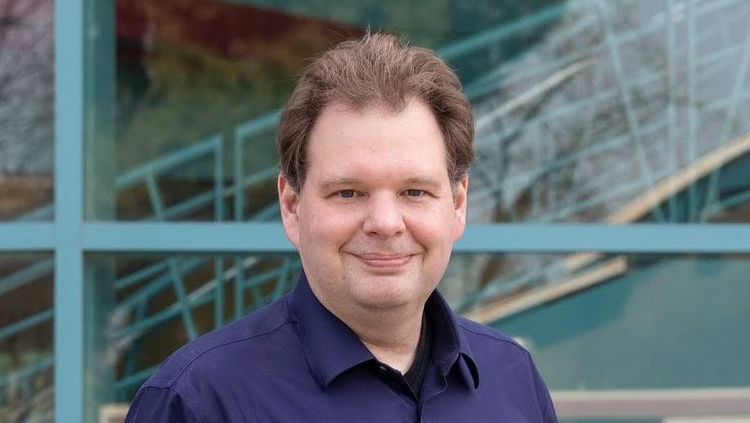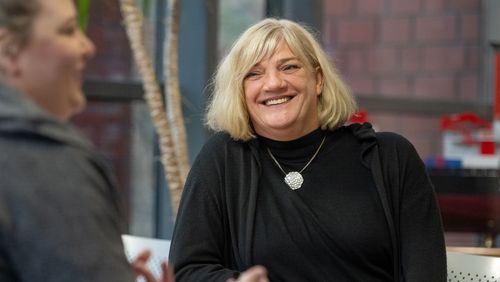Exponential growth, virus spreading scenarios, doubling times: the modelling expert Thilo Gross from the Helmholtz Institute for Functional Marine Biodiversity at the University of Oldenburg (HIFMB) explains the mathematics behind the corona epidemic.
"The world we live in is becoming increasingly intertwined. As a result, the outbreak of a disease in China can bring life in Germany to a standstill within a few weeks. The detailed mechanism of dispersal of a virus is highly complex. But in every complex system there are simple rules we can understand using simple mathematics. For example, the so-called superspreading – the phenomenon that individual events or persons spread the virus particularly strongly.
(…)
How quickly an epidemic can spread depends on the number of contacts between pairs of people. If more than two people meet simultaneously, the number of contacts increases accordingly. Let’s say, three people A, B and C meet to play a game of cards. This means that A meets B, B meets C and A meets C. There are thus three pair contacts. At a birthday party where 20 people are present, each of the 20 people meets the other 19, so there are 380 contacts.
Quadratic increase
Mathematically, we can say that the number of contacts increases quadratically with the number of participants in an event. Because of this quadratic increase, large events contribute disproportionately to the spread of a disease. The same logic cannot be applied to very large events. For a football match with 50,000 spectators, we cannot assume that everyone comes into contact with the other 49,999. Nevertheless, an extraordinarily large number of contacts occur at such large events. They can become so-called superspreading events, in which the virus is transmitted to very many people. Likewise flight, where many people are close to one another for a long time, can easily lead to superspreading.
At first glance the potential for superspreading events is bad news. However, superspreading events are already accounted for in the diseases current spreading rate, hence the chance to avoid these events gives us leverage to combat the disease. For example, if you cancel your birthday party with 20 guests, you are depriving the virus of 380 possible ways of spreading at one fell swoop.
Increased risk of infection
Superspreading does not only happen at large events. People who have a particularly large number of contacts can also become superspreaders. Especially in the initial phase of an epidemic, when there are only a few infected or already immune people, the risk of becoming infected increases proportionally to the number of contacts. Therefore, people with many contacts are running a high risk of infection. At the same time, however, it is precisely these people who can pass on the virus to a particularly large number of people. This again results in a quadratic effect.
For example, a person who has 50 contacts a day has a 50 times higher risk of being infected in the initial phase of the epidemic than a person who has only one contact a day. At the same time, a person with 50 daily contacts can pass the virus on to 50 people. The effects multiply. This means that a person with 50 daily contacts contributes 2500 times more to the spread of the virus than a person with only one daily contact.
(…)
Predicting human behaviour
The example of superspreading shows that even in our increasingly complex world, some phenomena can be understood with simple mathematics. One reason for this is that viruses spread from person to person – and thus on a scale we intuitively understand. On the other hand, you only need a few key figures to understand how they spread, such as the doubling time. Once we know these, we do not need to understand the complex biological details of the virus in order to predict the number of infected people.
However, predicting the future number of infected people remains difficult. This is not so much due to the epidemic itself, but to the fact that people and politicians are reacting to the epidemic. It is easy to predict how an epidemic will spread if there are no countermeasures. It is much more difficult to predict what countermeasures will actually be taken.
Society as a network
One way to study the effect of different countermeasures is to understand society as a network that changes in response to the disease. Network theory is a branch of science that developed in the 1990s. For example, it deals with areas of daily life such as the financial market, the Internet or society as a whole as a network with numerous nodes. This view makes it possible to study complex systems, which were previously difficult to model, using mathematical-physical methods.
Among others, network theory can be used to explain how globalisation affects the spread of diseases: In the Middle Ages, when diseases could only spread at the speed of a rider or a sailing ship, diseases such as the plague appeared in waves. In today's world, infectious diseases can spread at the speed of commercial airplanes, reaching the whole world quickly. There are therefore hardly any waves of epidemics left. Instead, global pandemics can occur almost simultaneously in all countries of the world.
Course of pandemics become predictable
Network research also shows that we would not be spared such pandemics even if we reduced air traffic to a fraction of its current volume. Even the existence of very few long-haul connections is enough to link the world tightly enough so that infectious diseases can spread quickly aroung the globe.
But there’s still a ray of hope: By linking the world more closely, the course of pandemics becomes more predictable, and the mathematics of complex networks makes it possible to understand disease outbreaks better and better. We can look at different scenarios and, if society has the will to do so, take countermeasures early on. We still have to learn to trust these new findings and act accordingly."





